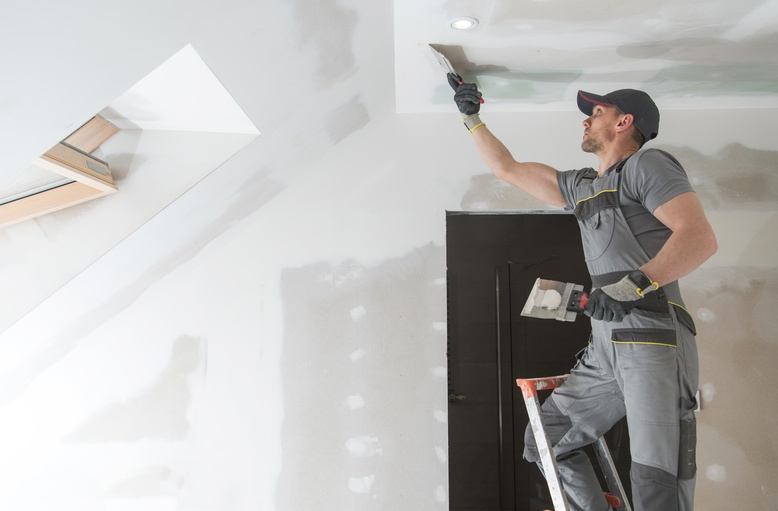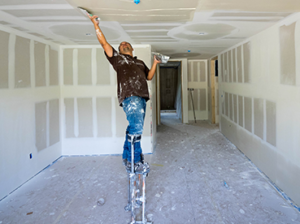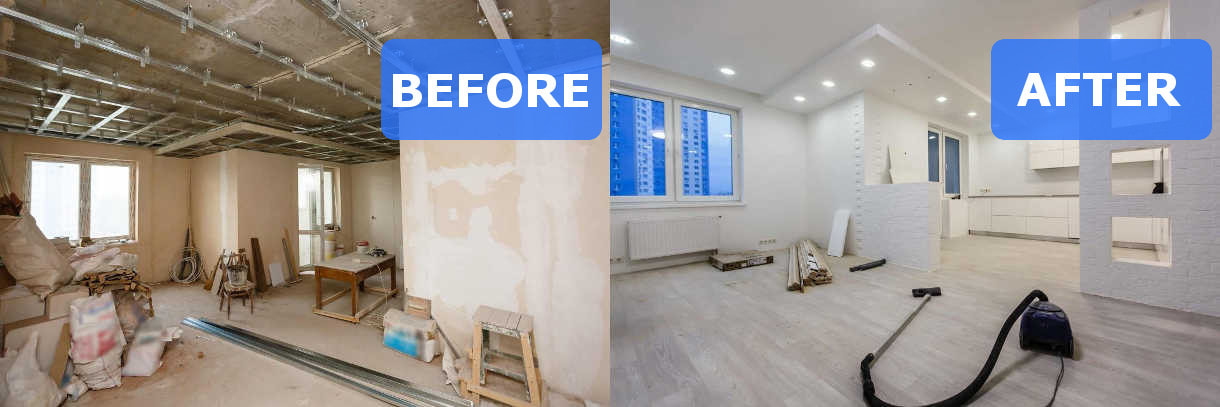The Ultimate Guide to Drywall Edmonton Solutions
Wiki Article
The Ultimate Step-by-Step Guide to Drywall Installation: From Preparation to Paint
Drywall setup is a critical step in any construction or remodelling job, and it requires careful interest to detail and exact implementation. From collecting the necessary devices and products to measuring and reducing the drywall panels, we will give you with clear and succinct instructions to ensure a successful installment.
Gather Necessary Equipment and Materials
To begin the drywall setup procedure, it is crucial to gather all the required devices and products in a specialist way. Having the right devices and materials not just guarantees a smooth and effective installation yet likewise adds to the total quality and durability of the ended up project.This will certainly allow you to cut the drywall sheets to the proper size, minimizing waste. An utility knife with sharp blades is important for precise and tidy cuts.
Following, you will certainly screw or need a cordless drill gun to safeguard the drywall sheets to the studs. Make certain to have a sufficient variety of drywall screws accessible. These screws need to be long enough to permeate the drywall and safely slow to the studs.
Other essential tools include a drywall lift or a number of assisting hands to aid with positioning and holding the drywall sheets in area. A drywall T-square can be useful for noting cutting lines, while a rasp or sanding block will certainly allow you to smooth any rough sides.
Lastly, collect all the necessary security tools, such as safety glasses, gloves, and a dirt mask, to secure yourself throughout the installation procedure.
Prepare the Job Location
Prior to beginning the drywall installment process, it is vital to sufficiently prepare the workspace to guarantee a smooth and effective installment. This step is crucial as it establishes the foundation for the whole task, making it possible for the installation to proceed flawlessly.To begin, it is very important to clear the job location of any furniture, designs, or other things that may block the installment process. This consists of eliminating wall danglings, covering furniture, and safeguarding the floorings with ground cloth or plastic sheets. Furthermore, make certain that the location is well-ventilated by opening home windows or using followers to avoid the build-up of dust and fumes.
Next, inspect the walls and ceilings for any type of existing damage or abnormalities. Resolve any kind of concerns such as cracks, holes, or uneven surfaces before proceeding with the installment. This may entail patching up openings, sanding down harsh locations, or applying a skim layer to level the surface.
Finally, measure and mark the format of the drywall sheets on the walls and ceilings. This will act as a guide during the installation procedure and help ensure exact placement of the panels (drywall installation). Take into account any type of electrical outlets, buttons, or various other fixtures that might need special interest
Procedure and Cut the Drywall Panels
When functioning with drywall panels throughout the setup procedure,Precise dimensions and precise cuts are vital. Before cutting the drywall, it is critical to measure the dimensions of the location where the panels will certainly be set up. Make use of a determining tape to figure out the height and size of each area, and make certain to make up any type of electrical outlets or components that might need custom cuts.When the measurements are taken, transfer them onto the drywall panels using a pencil or marking device. Confirm the measurements to make sure accuracy prior to waging the reducing procedure. It is advised to utilize a T-square or straight edge to develop straight lines for reducing.

When reducing drywall to shield yourself from particles,Keep in mind to wear safety and security goggles and dust masks. Furthermore, it is recommended to have someone assist you in holding the panels throughout the cutting procedure to make certain stability and precision
Install and Secure the Drywall Panels
Proper installment and protected accessory of the drywall panels is important for a effective and durable finish. To begin, very carefully raise the drywall panel into place, guaranteeing it lines up with the significant guidelines on the wall. Make use of a drywall lift or get the aid of another person to hold the panel in position while you safeguard it. Beginning with one corner, insert drywall screws into the panel, driving them with the drywall and into the wall studs. Make sure to room the screws evenly, about every 16 inches along the sides and every 12 inches in the center. It is very important to avoid over-tightening the screws, as this can cause the drywall to break or split. Repeat this procedure for every panel, guaranteeing they fit snugly together without any kind of spaces. When all the panels are set up, evaluate the surface area for any sticking out screws or blemishes. Utilize a screwdriver or drill to sink any extending screws slightly below the surface area. Ultimately, use drywall joint compound to cover the joints in between the panels and allow it dry completely prior to proceeding to the following step.
End Up and Paint the Drywall Surfaces
To attain a sleek and professional surface, the next action after mounting and protecting the drywall panels is to carefully end up and paint the drywall surface areas. Completing the drywall entails several steps to ensure a smooth and smooth look. First, any type of noticeable joints or joints in between the drywall panels must be covered with joint substance and tape. This substance is related to the joints, ravelled, and left to dry. As soon as completely dry, it is fined sand down to create a seamless surface. Next, any flaws or uneven areas on the drywall are loaded with joint substance and fined sand down till smooth. After the drywall is properly finished, it is time to repaint. Prior to paint, it is essential to prime the drywall surfaces to make certain appropriate attachment and a smooth surface. Once the guide is completely dry, the drywall can be painted utilizing a roller or brush, depending upon the preferred surface. Multiple layers may be essential to accomplish the desired color and protection. It is very important to permit each layer to dry before applying the next. Ultimately, once the paint is dry, the drywall surface areas prepare to be taken pleasure in.Final Thought

From gathering the necessary devices and products to determining and cutting the drywall panels, we will certainly provide drywall Edmonton you with succinct and clear guidelines to make certain a successful installment.Precise measurements and specific cuts are crucial when functioning with drywall panels throughout the installment procedure.Appropriate setup and protected accessory of the drywall panels is vital for a successful and resilient surface. Beginning from one edge, insert drywall screws into the panel, driving them through the drywall and right into the wall surface studs.To achieve a refined and professional surface, the next step after mounting and safeguarding the drywall panels is to thoroughly end up and paint the drywall surface areas.
Report this wiki page